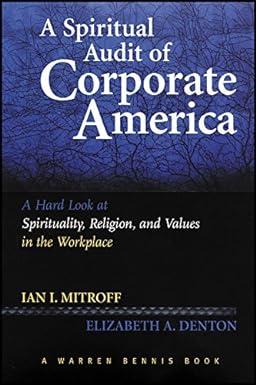Question
P Inc. purchased 90% of the voting shares of S Inc for $800,000 cash on January 1, 20X3; in addition, the purchase agreement included a
P Inc. purchased 90% of the voting shares of S Inc for $800,000 cash on January 1, 20X3; in addition, the purchase agreement included a contingent consideration payable in cash on January 1, 20X9. Assume management believes that $190,000 is the contingent consideration likely to become payable on January 1, 20X9 (ignore time value of money). P uses the cost method to account for its investment. On that date, Ss Common Stock and Retained Earnings were valued at $100,000 and $400,000 respectively.
Ss fair values approximated its carrying values with the following exceptions:
- The patent had a fair value which was $ 80,000 higher than its carrying value, and was estimated to have a remaining useful life of 10 years from the date of acquisition with no salvage value.
- Ss inventory had a fair value which was $20,000 less than book value. This inventory was sold by S in 20X3.
- Ss management has an exceptional working relationship with the employee Union. In the light of recent strikes in the industry, experts believed that managements reputation certainly can be valued at $100,000.
Both companies use straight line amortization exclusively for all assets and liabilities. The effective tax rate for both companies is 40%.
The Financial Statements of P & S for the Year ended December 31, 20X6 are shown below:
Income Statements
P Inc. S Inc.
Sales $1,030,000 $800,000
Other Revenues $150,000 $100,000
Less: Expenses:
Cost of Goods Sold: $650,000 $500,000
Depreciation & amortization Expense $30,000 $20,000
Other Expenses $120,000 $80,000
Income Tax Expense $150,000 $120,000
Net Income $230,000 $180,000
Retained Earnings Statements
Balance, Jan 1, 2016 $1,000,000 $600,000
Net Income $230,000 $180,000
Less: Dividends ($200,000) ($140,000)
Retained Earnings $1,030,000 $640,000
Balance Sheets
PETE Inc. SETE Inc.
Cash $110,000 $120,000
Accounts Receivable $120,000 $170,000
Inventory $100,000 $125,000
Investments $800,000 25,000
Land $110,000 $190,000
Equipment (net) $150,000 $180,000
Patent - 10,000
Total Assets $1,390,000 $820,000
Current Liabilities $160,000 $80,000
Common Shares $200,000 $100,000
Retained Earnings $1,030,000 $640,000
Total Liabilities and Equity $1,390,000 $820,000
Other Information:
- On Jan 1, 20X5 P purchased equipment for $50,000 and sold it immediately to S for $90,000 cash. The equipment is expected to be obsolete in 10 years.
- January 20X6, S sold a parcel of land to P for $120,000 cash. S had purchased this land in 20X2 for $60,000. In November 20X6, P sold the land to a third party for $120,000.
- During 20X6 P charged S $20,000 of management fees. S did not pay this amount in 20X6 but expects to pay the full $20,000 sometime in 20X7.
- During December 20X6, S sold inventory to P for $80,000 cash, the cost of the inventory to S was $60,000. 50% of these goods remained in Ps inventory at the end of 20X6.
- During December 20X5, P sold inventory to S for $50,000 cash, the cost of the inventory to P was $30,000. 50% of these goods remained in Ss inventory at the end of 20X5. SETE eventually sold the entire inventory to an outside customer in 20X6.
- Year 20X4 there was impairment in GW of $100,000.
- The Common Shares of P & S did not change since the date of acquisition.
- Both companies use straight line amortization exclusively for all assets and liabilities.
- The effective tax rate for both companies is 40%.
- For Consolidation P uses the Fair Value Enterprise method.
REQUIRED:
- Prepare a schedule showing the calculation of goodwill at the date of acquisition of sete under the entity theory, and a purchase price discrepancy amortization schedule.
- Prepare a schedule showing the inter-company realized and unrealized profits for 20x3 to 20x6. Your schedule should include both pre-tax and after-tax amounts.
c) Prepare the consolidated financial statements under the entity theory: Statement of Income and Statement of Changes in Equity for the year ended January 1 20x6, and Statement of Financial Position as at January 1 20x6. Show all supporting calculations.
Step by Step Solution
There are 3 Steps involved in it
Step: 1

Get Instant Access to Expert-Tailored Solutions
See step-by-step solutions with expert insights and AI powered tools for academic success
Step: 2

Step: 3

Ace Your Homework with AI
Get the answers you need in no time with our AI-driven, step-by-step assistance
Get Started


